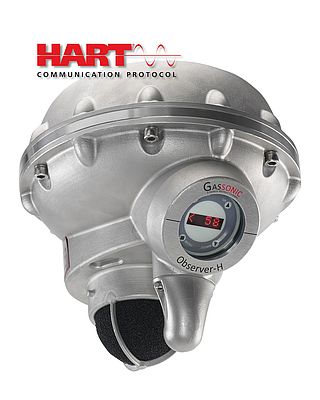Detecting gas leaks by sensing the airborne ultrasound emitted from leaking gas at high pressure, the Gassonic Observer-H ultrasonic gas leak detector from General Monitors features HART communications, Modbus with single and block transfer modes, Emerson AMS Intelligent Device Manager support, and event logging. It is suitable for gas detection in open, well-ventilated areas, where traditional detection methods may be unsuitable or dependent on ventilation. Since the gas leak detector responds to the source of a gas release rather than the dispersed gas, it is unaffected by changing wind directions, gas dilution, and the direction of the leak. Rugged and designed for failsafe operation, it supervises areas up to a 20m radius. One device is sufficient for the detection of leaks as small as 0.1 kg/s. Integrating an advanced stainless steel microphone, the detector also offers the Senssonic integrated acoustic self-test, which verifies the integrity of the instrument’s electric circuit and microphone every 15 minutes. It features stainless steel, AISI 316L explosion-proof housing, offering corrosion resistance in the harshest environments and is ATEX, IECEx, FM and CSA hazardous area certified and SIL 3 suitable. An integral high pass filter removes frequencies below 25 kHz, effectively eliminating interference from audible sound. At the same time, setting the alarm trigger level above the ultrasonic background noise ensures that the detector accurately detects gas leaks. The detector is equipped with a 3-digit LED display and an event logging function that stores fault, sound check, calibration, and alarm event history. It can be configured with an analog output or Modbus or HART communications to provide complete status and control capability in the control room. The Modbus and HART data can also be used for predictive maintenance and to enable asset management and process improvement. Operating at -40 to 60°C temperature and 10 to 95% RH ranges, the device detects leaks at 25-70 kHz frequency range at a dynamic range of 58-104 dB. Detection coverage varies from 13-20 m radius in very low noise areas (<58 dB), 9-12 m radius in low noise areas (<68 dB), to 5-8 m radius in high noise areas (<78 dB). Such distances are defined for a methane gas leak of 0.1 kg/s.


















